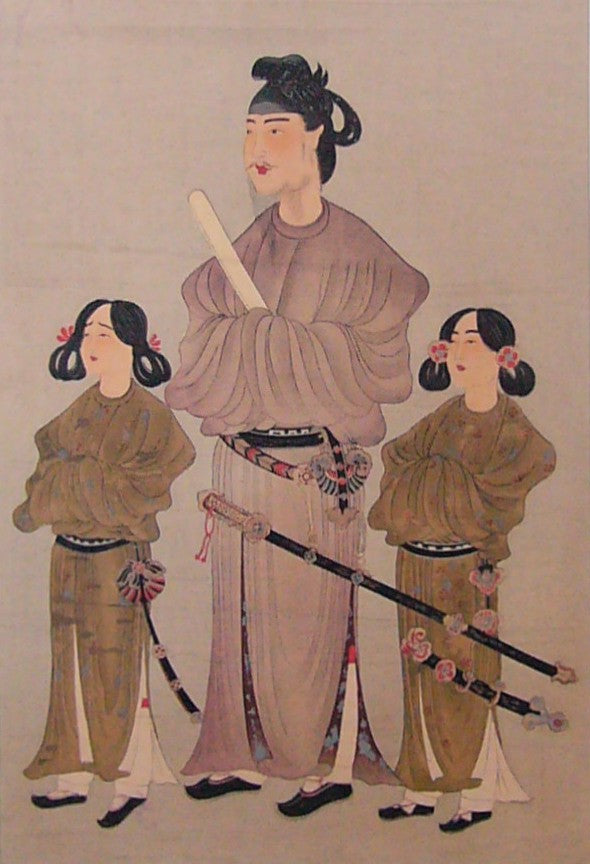Shotoku Taishi
Japan’s proximity to China was a key influence in its agriculture societies. Although Japan was able to keep itself free from Chinese rule, they were influenced by China in their institutions and customs. Due to the weather patterns in Japan, most people have settled on the east coast of the island and the weather has provided a climate conducive to successfully harvesting rice and other crops. The political structures and social institutions have been influenced in Japan by a variety of geographical factors. It was not until the seventh century that Japan was threatened by its more powerful neighbor, China and the Tang dynasty. When the Tang began interfering in Korean interactions, Japan realized they were in danger and centralized their authority, “…so that they could mount a more effective resistance in the event of a Chinese invasion” (Spielvogel & Duiker, 2013). In effect, because of Chinese influence, Japanese government became more central and organized.Taking after the Chinese government, Shotoku Taishi began implementing a similar system to reform the government model. His intention was to make the Japanese government more efficient and, “…limit the powers of the hereditary nobility and enhance the prestige and authority of the Yamato ruler” (Spielvogel & Duiker, 2013). He instituted a supreme ruler and a system in which ranking public officials were chosen.
The Japanese archipelago was instrumental in helping to create a more centralized state as the island nation created a difficult barrier to hostile forces. However, the isolation of the Japanese archipelago also gave rise to difficulties with trade as well as cultural isolation. While many ideas and were imported, they were not always successful because of the insular nature of the society. For example, the Chinese governing model was monumental in shaping Japanese culture as Prince Shotoku Taishi used this system to formulate the new government, and even after Taishi’s death, his successors continued to make reforms that were created to emulate the Chinese model. Chinese influences also brought Buddhism to Japan which the Japanese became very interested in. Buddhism was popular among the aristocrats but in many ways Japan did not succeed in transforming its government to be as similar to the Chinese as originally planned. The government eventually lost power due to the limited upward mobility in Japanese society. Tests for civil servants were not open to all, but limited to those of noble birth. As well, nobles were able to keep taxes for themselves which limited the wealth of the Chinese government. Although there were many similarities and ways in which Japan adopted Chinese culture and political models, the country was unsuccessful in entirely changing their system and failed to become as powerful as the Chinese.
References
Spielvogel, J. J., & Duiker, W. J. (2013). The Essential World History. Cengage Learning.
Photo By Unknown author — Japanese Painting Anthlogy, ed.et publ. by SINBI-SHOIN, TOKYO, 1941, Public Domain
~Citation~
Triola Vincent. Sat, Mar 06, 2021. How did Japan’s geographic location affect the course of its history? Retrieved from https://vincenttriola.com/blogs/ten-years-of-academic-writing/how-did-japan-s-geographic-location-affect-the-course-of-its-early-history
